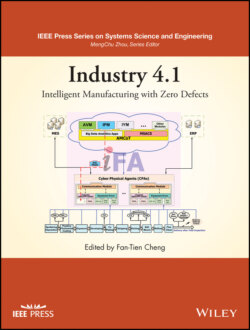Читать книгу Industry 4.1 - Группа авторов - Страница 47
Sensor Fusion
ОглавлениеThere is not a single sensor that can perfectly capture all signs released from the equipment during production. Every type of sensors has its own limitations in different aspects; therefore, it is difficult to obtain a comprehensive result by using only one sensory source.
To meet the requirement of enhanced accuracy with greater robustness under the varying environment, the sensor fusion technique that combines sensory data from individual and multiple sensory sources in a complementary manner is extensively proposed to improve the resolution and reliability of the acquired signals. Strictly speaking, multiple sensors with noncomplementary measurements and various features extracted from single signal can only be regarded as a multi‐sensor but not a sensor fusion system, since too much redundant information may decrease the accuracy [6, 7].
Note that, the sensor accuracy might be worsened with the increase of the distance between the sensor and the cutting zone. If the direct sensors cannot be attached on the surface closer to the cutting zone, the sensor fusion system can solve this problem by attaching two closely related sensors such as the combination of the accelerometer/current sensor, or the accelerometer/dynamometer, to provide the cross‐validation scheme between dependent signals without any loss of important information.
Generally speaking, AE sensors have very sensitive frequency and transient response, which are very adequate for combining with the current sensor, accelerometer, or dynamometer. Figure 2.11 illustrates a machinery spindle monitored by a sensor fusion system using an accelerometer and one thermal couple.
Figure 2.11 Sensor fusion system comprising an accelerometer and a thermal couple.
Figure 2.12 demonstrates a sensor fusion system with five built‐in sensors near the cutting zone on a computer numerical control (CNC) machine to capture critical information. The accelerometer and the thermal couple are mounted on the spindle, CT is attached on the power cable, AE is mounted and dynamometer is fixed on the machine table.
Figure 2.12 Sensor fusion system using five types of sensors.
